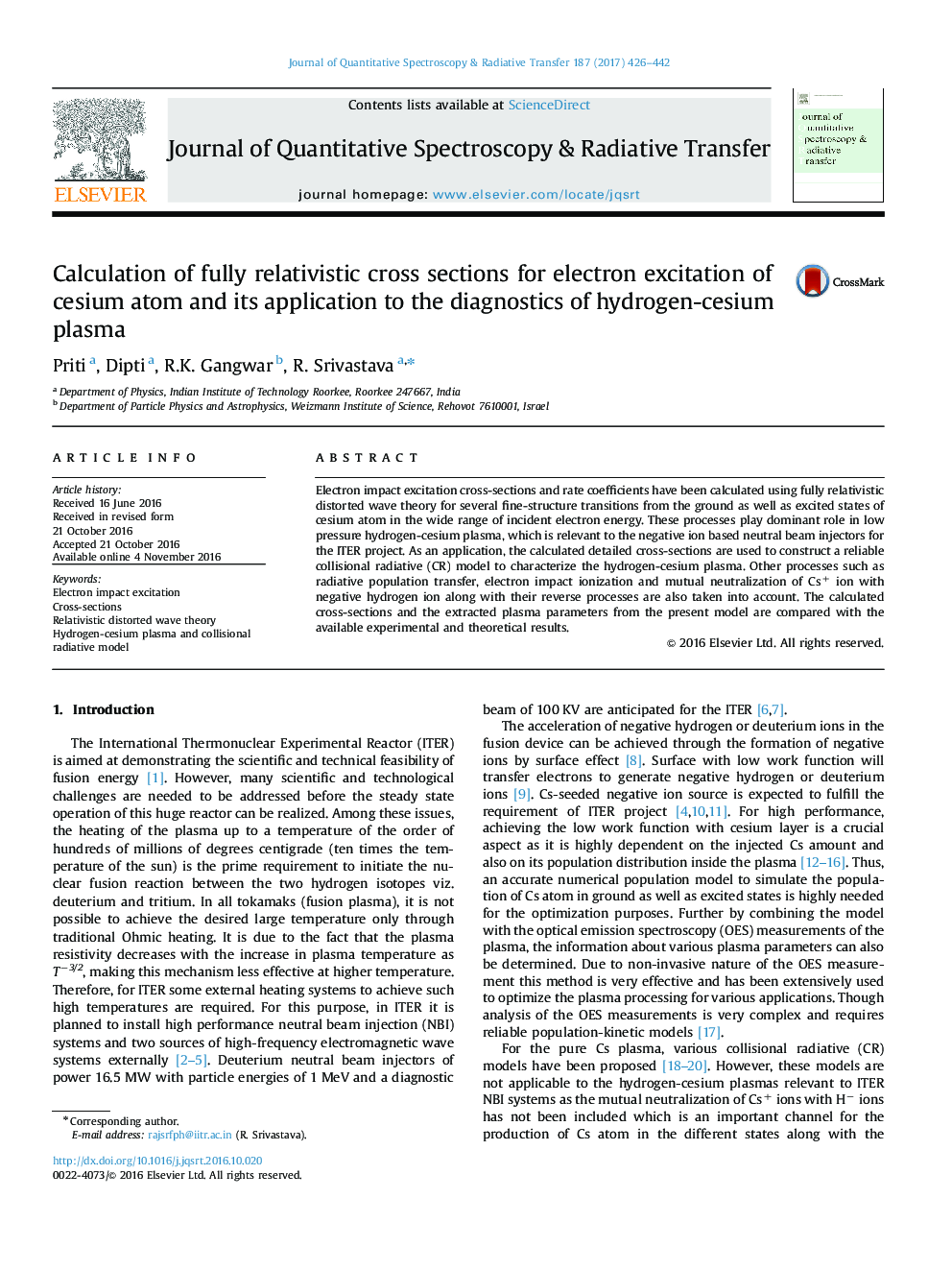| Article ID | Journal | Published Year | Pages | File Type |
|---|---|---|---|---|
| 5427439 | Journal of Quantitative Spectroscopy and Radiative Transfer | 2017 | 17 Pages |
â¢Relativistic distorted wave theory is used to calculate the electron-impact excitation of cesium.â¢Electron impact excitation rate-coefficients are calculated as a function of electron temperature.â¢A collisional radiative (CR) model has been developed using the obtained cross-sections and the characterization of the hydrogen-cesium plasma has been done.
Electron impact excitation cross-sections and rate coefficients have been calculated using fully relativistic distorted wave theory for several fine-structure transitions from the ground as well as excited states of cesium atom in the wide range of incident electron energy. These processes play dominant role in low pressure hydrogen-cesium plasma, which is relevant to the negative ion based neutral beam injectors for the ITER project. As an application, the calculated detailed cross-sections are used to construct a reliable collisional radiative (CR) model to characterize the hydrogen-cesium plasma. Other processes such as radiative population transfer, electron impact ionization and mutual neutralization of Cs+ ion with negative hydrogen ion along with their reverse processes are also taken into account. The calculated cross-sections and the extracted plasma parameters from the present model are compared with the available experimental and theoretical results.
